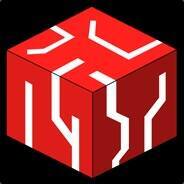What's the best way/system to set up raid 10 with in Windows?
-
Featured Topics
-
Topics
-
0
-
0
-
2
-
4
-
3
-
2
-
1
-
1
-
GOTSpectrum ·
Posted in Forum Suggestions12 -
djksm ·
Posted in New Builds and Planning8
-

















Create an account or sign in to comment
You need to be a member in order to leave a comment
Create an account
Sign up for a new account in our community. It's easy!
Register a new accountSign in
Already have an account? Sign in here.
Sign In Now